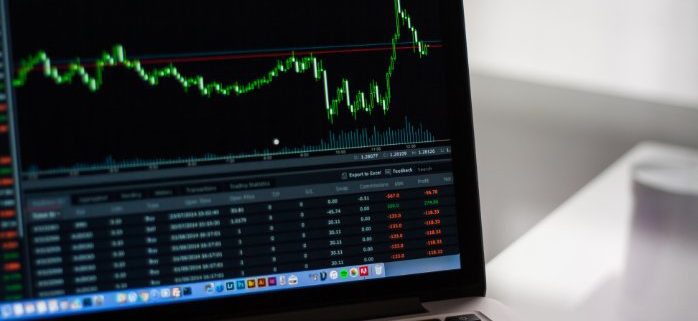How Well Do You Understand ETFs?
How Well Do You Understand ETFs?
Investors often look at exchange traded funds (ETFs) as interchangeable with common stock of public companies. They are both identified by 3 or 4 letter monikers and are accessible throughout the trading day. However, what investors must realize is that is where the similarities end. Before becoming a financial advisor, I spent 10 years as a market maker providing liquidity in ETFs. I focused on finding arbitrage opportunities, or inefficiencies, between an exchange traded fund and its underlying constituents. From my experience, I can tell you that in most cases an ETF is only as liquid as the market it represents. There can be added costs associated with the underlying assets that could affect the price paid for an ETF and its performance. For an investor, liquidity is never an issue until you actually need it.
The potential exception to this would be ETFs that track investment grade and high yield bond indexes in the U.S.. I provided liquidity during the financial crisis of 2008, and found more liquidity in the ETFs than in the underlying bonds. These products were widely used for purposes outside of long term investing. There was enough liquidity on both sides to provide a healthy market. Investors flocked to these products to find price discovery in some of the most turbulent days of the crisis. But in most cases, the underlying holdings drive the behavior of the ETF, not the other way around.
Index investing has been around for a while. The first exchange traded fund launched in the U.S. on the American Stock Exchange in 1993. I started my career on Wall Street in 2001 on the floor of the American Stock Exchange and worked close to the group of traders that made markets in many ETFs. With advances in algorithmic trading, this market has become more efficient. Trades occur in fractions of a second aided by computers, eliminating the need for a physical location to transact.
The reason for this efficiency is because these market makers are able to hedge their risk with an offsetting position in the components of the index. For example, if a market maker in an ETF sold shares in the market, they are able to offset that sale by purchasing shares of the individual stocks of the underlying companies. At the end of the day they aim to deliver the shares of the individual stocks that they purchased to the ETF issuer. In return, the issuer will deliver shares of the ETF to cover the sale they made during the day. This is called a creation, because more shares of the ETF are created to satisfy inflows by investors. If investors were selling the ETF, the market maker could deliver those shares to the issuing company in return for shares of common stock. This is called a redemption, since it would decrease the shares outstanding in the market.
But what happens if an ETF is holding assets that aren’t as liquid as the top 500 companies in the U.S.? ETFs often hold companies with a small market capitalization. Some have international holdings where the fund needs to hedge currencies that may not be very liquid. Those holdings may also have high transaction costs or local taxes associated with them. Fixed income ETFs often hold debt instruments that don’t trade very often. These issues can be amplified during periods of volatility. Sometimes an ETF will implement strategies that use derivatives like options or swaps to create leverage. ETFs can track commodities where futures contracts are the only way to gain access. Derivatives can also add unintended costs that are passed on to the investor through the price paid in the market. These factors can also affect the ongoing performance of the investment.
The universe of ETFs continues to grow, becoming increasingly complex. ETFs allow everyday investors access to areas of the market that once were only available to institutional investors. If you are unsure about the risks and costs associated with the underlying assets held by an ETF, speak with a professional.
An exchange-traded fund (ETF) is similar to a mutual fund that tracks a specific stock or bond index, such as the Barclays Capital 1-3 Year Treasury Index. ETFs trade on one of the major stock markets and can be bought and sold throughout the trading day, like a stock, at the current market price. And, like stock investing, ETF investing involves principal risk-the chance that you won’t get all the money back that you originally invested-market risk, underlying securities risk, and secondary market price.
*High yield/junk bonds (grade BB or below) are not investment grade securities, and are subject to higher interest rate, credit, and liquidity risks than those graded BBB and above, They generally should be part of a diversified portfolio for sophisticated investors.
Investors should consider the investment objectives, risks, charges and expenses of the Exchange Traded Fund carefully before investing. The prospectus and, if available, the summary prospectus contain this and other important information about the Exchange Traded Fund. You can obtain a prospectus and summary prospectus from your financial representative. Read carefully before investing.
The opinions voiced in this material are for general information only and are not intended to provide specific advice or recommendations for any individual. All performance referenced is historical and is no guarantee of future results. All indices are unmanaged and may not be invested into directly. An investment in Exchange Traded Funds (ETF), structured as a mutual fund or unit investment trust, involves the risk of losing money and should be considered as part of an overall program, not a complete investment program. An investment in ETFs involves additional risks such as not diversified, price volatility, competitive industry pressure, international political and economic developments, possible trading halts, and index tracking errors.
Securities offered through LPL Financial, Member of FINRA/SIPC and investment advice offered through Stratos Wealth Partners Ltd., a Registered Investment Advisor. Stratos Wealth Partners, Ltd. and Lob Planning Group are separate entities from LPL Financial.





Leave a Reply
Want to join the discussion?Feel free to contribute!